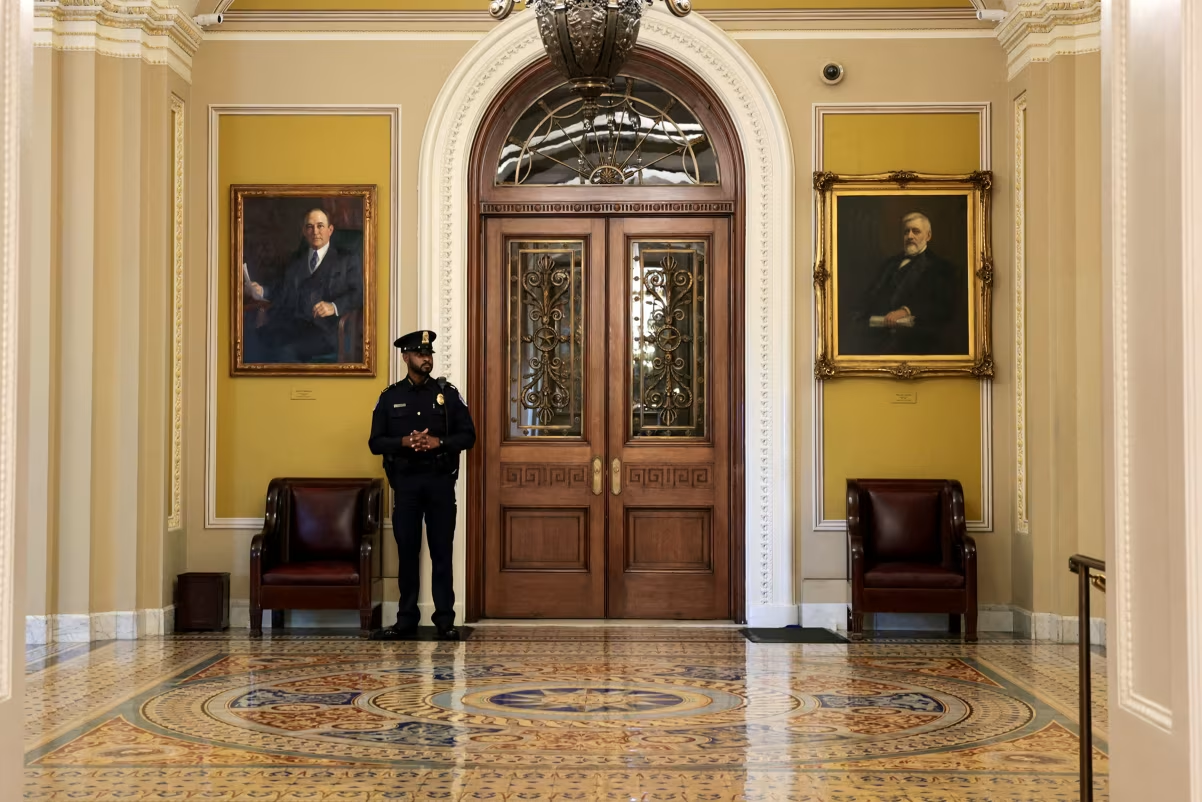The long-standing Senate custom known as the filibuster—an informal term for any maneuver designed to block or delay legislative action—has long been the bane of majority parties in the US Congress. This procedural hurdle, requiring a supermajority of 60 votes to cut off debate and proceed to a final vote, has historically enabled a minority to paralyze the legislative agenda. Its impact is vast, dictating what major legislation can pass and what is left to wither in procedural limbo.
For instance, the inability to pass fundamental legislation like comprehensive immigration reform under President George W. Bush or climate change initiatives during the Obama administration were directly attributable to the filibuster. In the modern era, the filibuster is effectively shorthand for the requirement that supporters of a measure must “invoke cloture”—a specialized procedure to limit debate—which necessitates the support of at least three-fifths of the Senate. This rule has consistently forced legislative compromises or, increasingly, led to the use of complex budgetary workarounds like reconciliation, which cannot be applied to vital spending bills required to [keep the government open].
Understanding the Arcane Rules of Filibuster and Cloture
To grasp the current political gridlock, one must first decipher the esoteric language of Senate procedure, particularly Rule XXII, which governs the filibuster. The current system was arguably created by accident, with unlimited debate emerging after a simple majority rule provision was dropped centuries ago to simplify the Senate’s procedures. Filibusters gained prominence around the Civil War and became a notorious tactic when Southern Democrats used them for years to obstruct Civil Rights legislation before 1964.
To counter this obstruction, the rule of cloture was adopted in 1917, initially requiring a two-thirds majority (67 Senators today) to limit debate, before being lowered to the current three-fifths (60 votes) in the late 1970s. While cloture was intended as a check on obstruction, the use of both procedures has skyrocketed. In the 2023-2024 Congress, there were 266 cloture motions filed, resulting in 241 votes, illustrating that the 60-vote threshold is now the default for nearly every substantive action.
The practical effect of this process is not merely delay but an institutionalized paralysis where “debate” is code for delay, and the Senate’s design for supermajority compromise has instead created a supermajority requirement for virtually all meaningful progress. The intricacies of this Senate rule are officially documented and defined within the [United States Senate glossary].
The Call for the “Nuclear Option” and Institutional Precedent
President Donald Trump’s call for Senate Republicans to end the filibuster is not the first attempt to dismantle the practice; Democrats tried and failed to do the same when they controlled the majority. However, the current demand is a push for the “nuclear option,” which refers to changing Senate precedent rather than formally amending Rule XXII, which would require an unattainable 67 votes.
The nuclear option is a sly procedural shortcut: a Senator objects to the cloture rule, the presiding officer rules the objection invalid, and then a simple majority of 51 votes is cast to overturn the ruling, thereby establishing a new precedent that bypasses the 60-vote requirement for a specific class of legislation. The Senate has utilized this destructive, but effective, tactic before. Democrats first went “nuclear” to make it easier to confirm President Obama’s executive and judicial nominees.
Republicans later expanded this precedent to confirm Supreme Court nominees under President Trump, effectively making presidential appointments a simple majority affair. Ending the legislative filibuster for bills would be the final and most impactful application of this precedent, resulting in a world where the majority party could swiftly enact its agenda with 51 votes. The long-term institutional implications of this move are significant, potentially intensifying the yo-yo nature of modern Washington, where each new Congress immediately undoes the work of the previous one. For a deeper dive into how Senate procedures and precedent evolve, the [Congressional Research Service Reports] offer comprehensive analysis.
Geopolitical Consequences and the Future of Governance
Ending the legislative filibuster would fundamentally alter the balance of power in the US, allowing for a swift, simple-majority governance that mirrors the House of Representatives. While the upside is increased efficiency and the ability for an in-power party to “get more done,” the downside is an amplification of political volatility and legislative instability. The Senate was specifically designed for compromise, using the supermajority threshold to force bipartisan engagement and ensure that major policy shifts, like those affecting healthcare or tax credits, possessed broad support.
Without the filibuster, major, long-term legislation—such as the Affordable Care Act, Trump’s tax cuts, or the Inflation Reduction Act—which were passed through the complex and limited process of reconciliation, could be repealed and replaced with simple majorities, resulting in an endless cycle of policy reversals. This lack of legislative stability would have profound effects on sectors reliant on consistent policy, from energy and infrastructure to [international trade agreements]. Although high-profile Republicans have previously opposed ending the legislative filibuster, arguing that it preserves the Senate’s core function, the pressure from a dominant political figure like a sitting or former President could eventually sway the requisite 50 Senators.
The future of US governance, and the ability of its political system to handle complex issues, hinges on whether the current majority chooses to maintain the procedural friction designed to ensure enduring legislation or opts for the swift, but precarious, simplicity of majority rule. Detailed information on the history and purpose of the Senate can be reviewed via the [Senate Historical Office]. To understand the specific legislation that has passed or stalled under the current rules, the [Congress.gov legislative tracker] is an invaluable resource.







